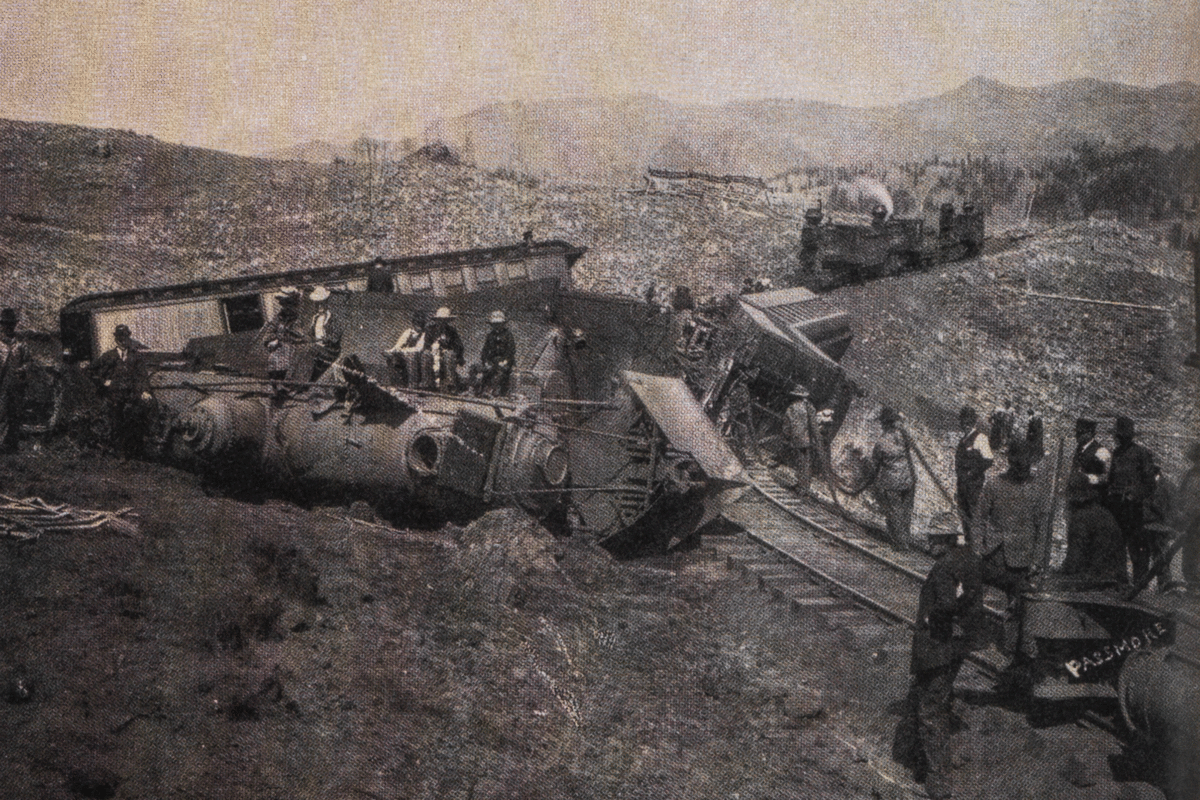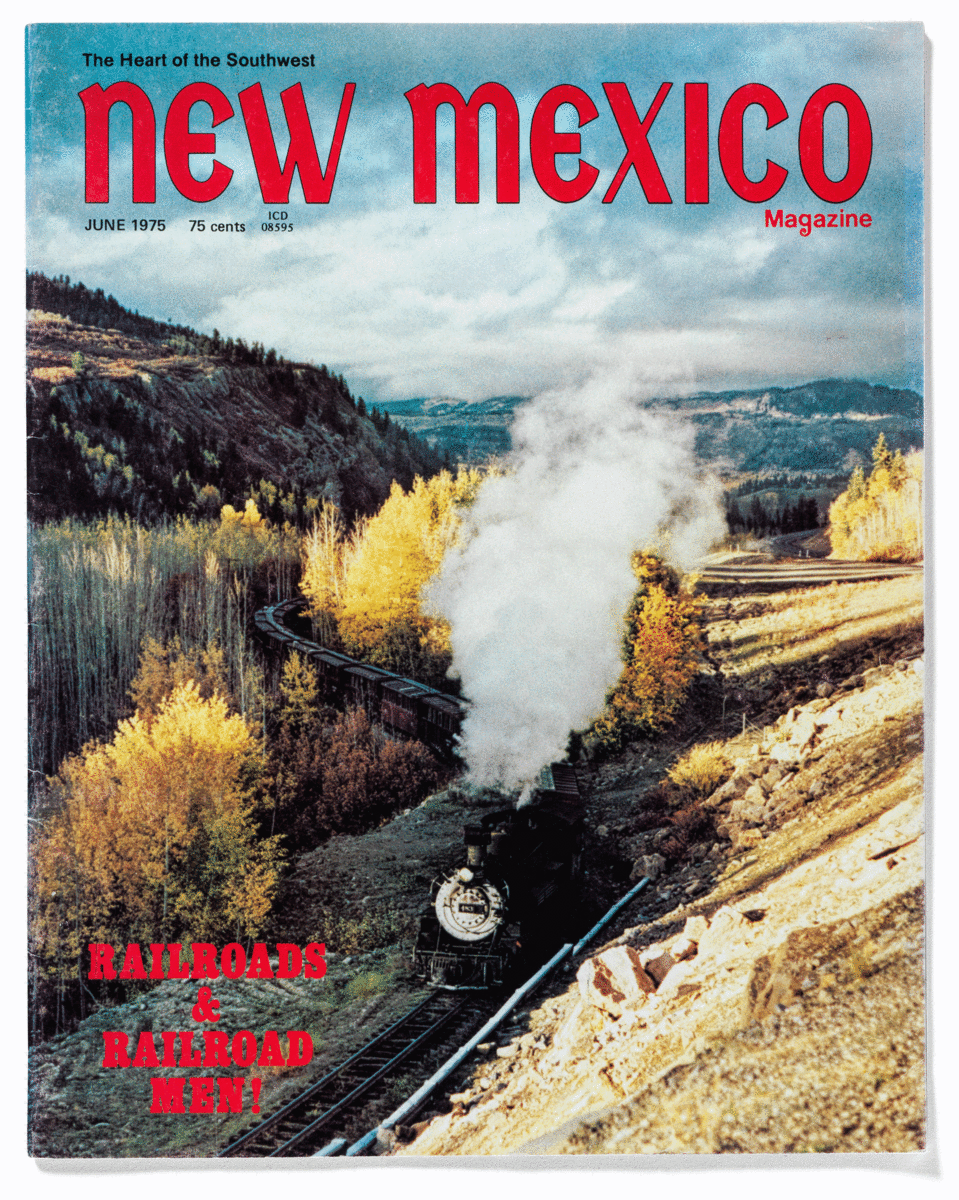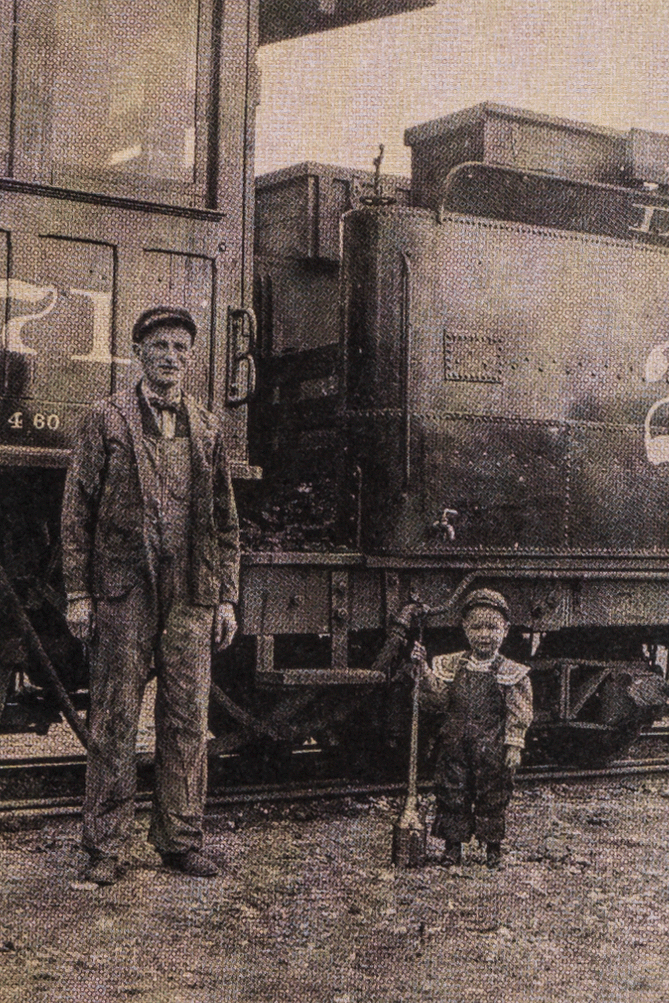“GRANDPA, WHY DO TRAINS need three tracks to run on?” That naive question by a little boy of eight unlocked a storehouse of memories thousands of miles long but seldom over three feet wide.
“Well, Sonny,” replied my grandfather. “They don’t need three tracks. We run narrow-gauge and standard-gauge trains out of here so there are three rails in the yards so we can use the same tracks for making up trains of both sizes.”
I didn’t quite understand what he meant but, by then, he was telling one of his many adventures on the narrow-gauge Iines of the Denver and Rio Grande Railroad, so I just kept quiet and listened.
Grandpa Allbee, his widowed mother, and five brothers and sisters came to Colorado’s San Luis Valley in 1901. They had traded their apple orchard in Wisconsin for some unseen acreage southwest of Alamosa. Upon their arrival, they found alkali-covered soil, burro weed, and no water anywhere near. Disgusted at this turn of events, Grandpa walked 12 miles into town to apply for a job on the railroad.
The only job available was that of engine wiper in the roundhouse, which paid 15 cents an hour. Six months later he was promoted to fireman and transferred to Chama, New Mexico, where he met and married my grandmother in 1903. He fired on the narrow-gauge engines, learning all he could about their operation. In September 1905, he was called into Santa Fe to take the examination to become an engineer. He waited outside while others were tested before him. As time passed, he became more and more apprehensive. An avid tobacco chewer for many years, he’d given up the habit when Grandma was pregnant. Finally, unable to stand the tension any longer, he walked to a nearby store and bought a plug of chawin’ tobacco. When called in for his exam, he could hardly answer the questions because he had the whole plug in his mouth. Despite that, he passed the test and began a career of more than 40 years as a steam locomotive engineer.
Grandpa had a favorite story he loved to tell, one I never tired of hearing. It occurred one day when he was pulling the southbound passenger down the Santa Fe Branch—the old “Chili Line.” He’d just started the run down Barranca Hill when he put his head out the window to sneeze. Suddenly he put on his brakes and began to back up. As he stopped the train, his fireman said, “You’ll never find your teeth in all that brush, Claude.”

Engineer Mike Hurley failed to negotiate a tight reverse curve in 1904, and Engine #120 lies on its side on the Cumbres Hill. An entire shipment of china was broken—except for the sugar bowl. Photograph courtesy of Roy W. Allbee.
The train crew and all the passengers got out and began searching for the missing molars. A passenger found them and returned them to grandpa. He casually wiped the dirt off on his sleeve, replaced them in his mouth, climbed back into the cab and highballed the rest of the way into Santa Fe, arriving on schedule.
A story like that spreads rapidly, so it wasn’t long after their arrival that the State Corporation Commissioner, Robert Valdez, issued a tongue-in-cheek edict to the effect that the railroad must keep its right-of-way free of weeds, brush and all debris to facilitate the finding of wigs, false teeth, glass eyes, and other detachable objects.
Another favorite story of Grandpa’s was what he called “The Hot Chile Incident.” He was again taking the southbound into Santa Fe. His fireman on this particular trip was a young Easterner making his student run. While talking in the cab, Gramps said, “When we get into Santa Fe, I’ll take you to a cafe where they make the best chile in the whole Southwest.”
“What’s chile?” inquired the Easterner.
“Why, chile is the food of the gods,” Gramps replied. “There’s nothing in the East which can even compare to it.”
The cafe in question made two kinds of chile—a super-hot variety preferred by the natives and a second, milder, “gringo” variety. Grandad had a standing agreement with the management that anytime he came in with someone they didn’t know, the newcomer was to be served the hot chile.
They entered the cafe and sat down. The waiter came over to take their order. “I’ll take a bowl of that good chile,” Grandpa said.
“I’ll have the same,” echoed the fireman.

ON THE COVER
A Cumbres & Toltec Scenic Railroad train carries passengers to high adventure amid a blaze of fall color. Romantic old steam-powered locomotives cross spectacular Cumbres Pass from Chama, New Mexico, to Antonito, Colorado, most of the summer and fall. Photograph by David B. Ogle.
When the waiter returned with their orders, Grandpa put a huge spoonful into his mouth and immediately extolled the heavenly taste. The young fireman took an equally large bite. His face turned scarlet, and he tried to gulp down at least a gallon of water. They joked about it later. The good-natured novice said, “We should find a way to feed that chile to Old 169 here. The fire in my belly was twice as hot as the one in his!”
Accidents weren’t common on the narrow-gauge lines, but they did occur. The worst wreck Grandpa was involved in was quite spectacular. Four of those little engines were pulling a freight over Cumbres Pass during the winter. Grandpa was the engineer on the third engine. All of a sudden, his fireman called out, “Good Lord, Claude, look at the snow coming down the mountain!”
Grandpa glanced over at the mountainside. It looked as if the whole range were falling down on them.
“Hang on,” he yelled, “That one’s going to get us!”
The avalanche did get them. The lead engine got through but the second and third caught the full force broadside. The second was picked up and thrown down the gorge, killing both the engineer and fireman. Grandpa and his fireman were, miraculously, able to jump clear. The fireman was only bruised and able to walk away. Grandpa wasn’t so lucky. He caught his back on something as he went out the window and poked a hole in it about the size of his fist.
He used to tell it like this, “I landed in about eight feet of snow and was damned lucky it was that deep. I looked up towards the track and, for the first time in my life, I said a prayer. That engine was bouncing down the hill like a rock and I knew it was going to hit me! It stopped about 20 feet away. I said another prayer and crawled up to the roadbed.”
Engine No. 170, to this day, lies in the bottom of Toltec Gorge with its number plainly visible—a mute testimony to the hazards of narrow-gauge railroading in the mountains.

Grandpa Allbee and his underage helper, his son, Evan. Photograph courtesy of Roy W. Allbee.
Grandpa used to tell the story about an engineer who was never involved in a train wreck.
“I was pulling a freight down to Santa Fe. The stationmaster in Española flagged me down to tell me to take the first siding down the line to let the northbound get by. I was ahead of schedule so I thought I could make the second siding. I ran as fast as I could but so did the northbound. I met him about halfway between the two sidings. We stopped no more than 25 feet apart and old Pollard started to get down out of his cab. I could see he was fuming mad. He stomped down, slipped, and broke his leg. Never was in a wreck in his whole life but he never lived down breakin’ his leg getting out of that cab.”
Those three-foot-apart raiIs were a way of life to many besides those directly involved in train operation. Most of the trainmen provided services to the people living along the right-of-way other than those listed in the railroad brochures. Many railroaders became unofficial newsboys, tossing the latest edition of the New Mexican or some other newspaper to selected patrons along the line.
Grandpa provided a necessary commodity to some of the women along the route. The ladies would set up their washtubs alongside the tracks. When he spotted these, Gramps would stop the train and filI them with steaming hot water from the engine’s boilers.
Even the workers in the fields were influenced by the little narrow-gauge trains. From Servilleta to Otowi, they knew it was lunchtime when they heard the train whistle.
The train would frequently be flagged down by a roadside resident while it was on the trip south in the morning. When returning north in the evening, the train would stop while the engineer, fireman, conductor, or brakeman delivered the groceries ordered that morning.
Their reward for these unofficial services was an occasional cup of coffee or a good hot meal while the train sat spewing steam into the dry valley air.
Shortly after his retirement in 1944, Grandpa and Grandma moved to Florence, Colorado, to escape the frigid winters in the San Luis Valley. He could leave the valley but he couldn’t leave narrow-gauge railroading. He went to work as the chief engineer on the little 15-inch Royal Gorge Scenic Railway, one of the narrowest gauges of them all.

QUOTABLE
“It’s the sound of this little railroad train that hits you first. The Cumbres & Toltec Scenic Railroad is no silent, modern, mammoth, diesel-powered thing. The sound of this railroad is a soft, thudding staccato of pressure and pistons and hissing steam. It is a sound from history itself.”
—Stephen Ressler Neary, “The Little Train That Can”
The narrow gauge was the father of many of the towns along the line while it brought civilization and transportation to others. Such names as Tres Piedras, Servilleta, Chama, La Manga, Cumbres, Alcalde, Embudo, and Santa Fe became familiar to me, even though I’d never been to any of them. Some of these are still thriving communities, while others are little more than ghost towns since the narrow gauge, their life’s blood, is silent.
The narrow-gauge lines are gone now. Most of the rails have been pulled. The rolling stock has either been scrapped or sold to be used on excursion runs. Colorado and New Mexico bought the Denver and Rio Grande right of way between Antonito and Chama. Now called the Cumbres & Toltec Scenic Railroad, it is used as a tourist attraction in the warm summer months, but never in the dead of winter, when steam railroading is most hazardous.
Grandpa is gone too. He died in 1969 at the age of 94, the last survivor of his hearty breed. A new generation of men and trains has taken over the railroads now, but each owes his beginnings to memories—three feet wide.
JUNE 1975 CALENDAR
Annual Conrad Hilton Golf Tournament
New Mexico Institute of Mining and Technology, Socorro
June 2-5
Pioneer Days, Miss Rodeo
New Mexico pageant, R.C.A. Rodeo and Parade, Clovis
June 5-8
Pinto Regional Horse Show
Fairgrounds, Albuquerque
June 7-8
Buffalo dance
Santa Clara Pueblo
June 8
San Antonio Fiesta
Cochiti, Sandia, San Ildefonso, San Juan, Santa Clara, and Taos pueblos
June 13
8th annual Inter-Tribal Powwow
SIPI Albuquerque
June 13-15
3rd annual State Championship Muzzleloading Matches
Estancia
June 13-15
New Mexico Wildflower Association field trip
Santa Clara Canyon
June 14-15
Annual Square and Round Dance Festival
Community House, Red River
June 19-20
Navajo rug auction
Elementary School, Crownpoint
June 27
Annual Taos Rodeo
Taos
June 29-29



